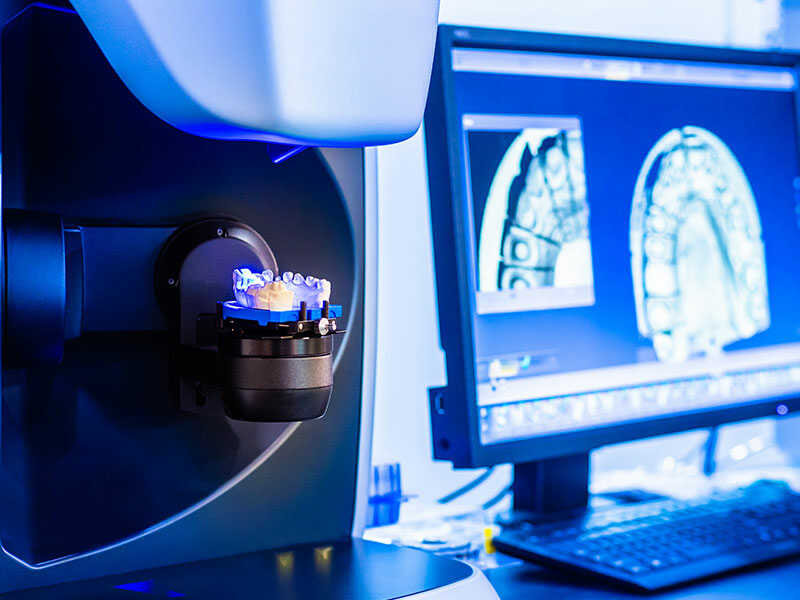
Digital dentistry is a computer-aided application that allows dentists to provide patients with faster, more accurate, and more comfortable treatment. Digital dentistry uses computerized scanning, 3D digital imaging, CAD/CAM technology, and other digital tools and technical approaches to analyze patients’ teeth and gums, as well as digital design of treatment plans. This technology allows dentists to make more precise diagnoses, schedule more predictable treatments, and execute treatment procedures more quickly.
One of the most significant benefits of digital dentistry is the opportunity to build an aesthetically pleasing smile. It is possible to make the needed adjustments in accordance with the person’s face and mouth structure using the micro camera, such as managing the contact points with the opposite tooth, performing virtual abrasion, adding, shape changes, and enlarging the braces. Furthermore, it minimizes the frequency of contact places between opposing teeth and allows the teeth to be formed three-dimensional using a micro camera.
Digital design programs make an important and successful contribution to digital dentistry and smile design. Because digital design solutions allow for online collaboration, it is feasible to obtain expert assistance from overseas and, if necessary, incorporate it into the application without wasting time.
Application Areas of Digital Dentistry
Digital Measurement
Intraoral scanners are used to transfer the patient’s oral structure to the computer in 3D. Because paste-like materials are not utilized for measuring, unpleasantness such as the nausea reflex is avoided. Furthermore, the measurement data is saved in a database and is conveniently accessible when remanufacturing is required.
Digital Design and Production
CAD-CAM equipment are used to make computer-generated designs from materials such as zircon. Dental fillings, veneers, bridges, and implant-based prostheses, among other uses, are manufactured in less time and with higher quality this way. The number of sessions and time spent in the clinic by the patient are reduced.
Digital Smile Design
Computer programs are used to thoroughly examine the patient’s current mouth condition and desired smile. The patient is shown the grin simulation in the computer environment, and the smile design is given its final shape by involving the patient in the process and soliciting his or her feedback. This completed design is created using CAD-CAM technology and applied to the patient. As a result, the patient receives a grin that fits his or her expectations.
Digital Orthodontics
Digital technologies are also employed to create transparent plaques for the treatment of crooked and crooked teeth. The patient’s treatment process is planned using intraoral scanner measurements, and the plaques are created using 3D printers. The plates become more comfortable and compatible as a result, and the treatment time is reduced.
Digital Implant Planning
Implant treatment also makes use of digital methods. The angle and depth of the implants can be modified more easily in light of pictures produced using intraoral scanners and tomography, and the places where the implants will be put can be decided. The surgical procedure is therefore made safer and more successful.
In a nutshell, digital dentistry is the dental therapy of the future. Digital approaches, which will be applied in a broader region as technology advances, will allow patients to obtain more comfortable and predictable treatment. Dentist Müge Ateş can provide further information regarding digital dentistry.










